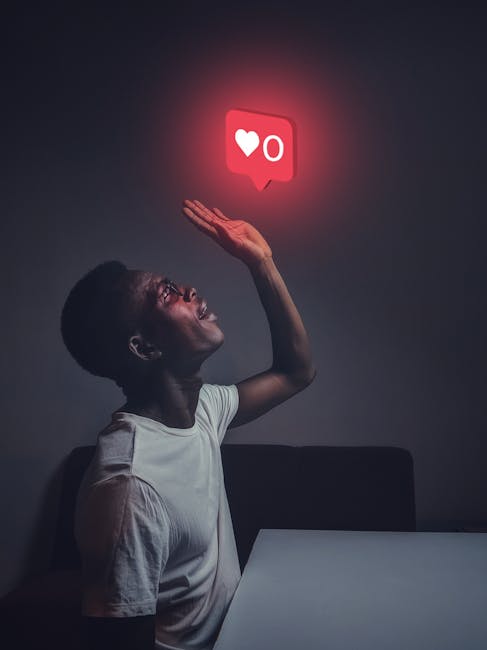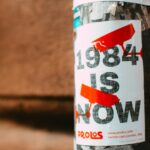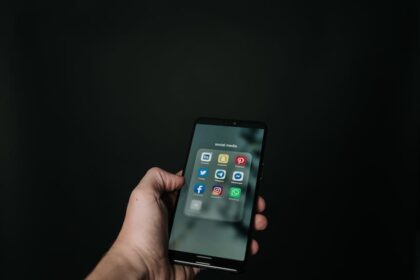Understanding Lookalike Audiences (LLAs) is foundational for highly effective Instagram advertising, shifting campaigns from broad, speculative targeting to precise, data-driven outreach. Lookalike Audiences are a powerful tool within the Facebook Ads platform, which governs Instagram advertising, allowing marketers to reach new people who are highly likely to be interested in their products or services because they share characteristics with an existing customer base or other valuable audience segments. At its core, a Lookalike Audience is a new audience segment that Facebook’s algorithm creates by identifying similarities among people in a specified “source audience.” This intricate process leverages vast datasets and machine learning capabilities to expand reach to potential customers who exhibit similar behaviors, demographics, and interests to those who have already engaged with a brand or made a purchase. The power of Lookalike Audiences on Instagram stems from their ability to bypass guesswork in audience selection, providing a direct pathway to individuals who are statistically predisposed to converting. This precision significantly improves ad relevance, leading to higher engagement rates, lower costs per acquisition, and ultimately, a superior return on ad spend. The algorithm processes numerous data points from the source audience, including but not limited to age, gender, location, interests, online behaviors, pages liked, and even device usage. It then finds millions of other users across Facebook and Instagram who match these aggregated characteristics, presenting a highly scalable and effective targeting solution. This intelligent expansion of reach allows businesses of all sizes to tap into new markets with a much higher probability of success than traditional demographic or interest-based targeting alone. Leveraging LLAs effectively on Instagram requires a deep understanding of their mechanics, meticulous source audience preparation, and strategic implementation within campaign structures. It’s not merely about creating an LLA and hitting ‘go’; it’s about a nuanced approach to audience segmentation, ad creative alignment, and continuous performance analysis to unlock their full potential.
The foundation of any successful Lookalike Audience campaign on Instagram lies in the quality and relevance of its “source audience.” A source audience is the pool of people from which Facebook’s algorithm extracts data to create the Lookalike. The adage “garbage in, garbage out” applies perfectly here; a poorly chosen or insufficiently sized source audience will yield ineffective Lookalikes. Conversely, a high-quality, relevant source audience is the bedrock for highly performant Lookalike Audiences. There are several critical types of source audiences that marketers can leverage to build powerful Instagram LLAs. Each type offers distinct advantages depending on the campaign objective and the stage of the customer journey being targeted. The most common and effective source audiences include Website Visitors, Customer Lists, and Engagement Audiences.
Website Visitors, tracked via the Facebook Pixel, represent one of the most robust source audiences. The Pixel, a small piece of code installed on a website, tracks user interactions, providing rich behavioral data. This data can be segmented to create highly specific source audiences. For instance, an audience of all website visitors over the last 30, 60, or 90 days can be valuable for broad awareness or consideration campaigns. More granularly, specific pages visited can serve as powerful sources. An audience of people who visited a specific product page but didn’t purchase indicates a high level of interest, making them ideal for a Lookalike focused on conversion. Similarly, users who added items to their cart but abandoned the checkout process are incredibly valuable. Even visitors to blog posts on specific topics can be used to create Lookalikes for content promotion, ensuring that new audiences are reached with relevant information. The recency of website activity is also crucial; often, more recent visitors provide a more accurate and active representation of current potential customers. A source audience of users who visited high-intent pages within the last 30 days will typically outperform one based on visits over 180 days for conversion-focused Lookalikes. The size of this source audience also matters; while a minimum of 100 people is technically required from a single country for a Lookalike, best practice suggests at least 1,000 to 5,000 unique users for optimal algorithm performance. Larger, more homogeneous source audiences generally lead to more precise and effective Lookalikes.
Customer Lists, uploaded directly to Facebook Ads Manager, are arguably the gold standard for Lookalike source audiences, especially for businesses with established customer bases. These lists typically contain email addresses, phone numbers, and sometimes other identifiers like names or locations. The key advantage of customer lists is that they represent individuals who have already converted or demonstrated high value. By uploading a list of your best customers—those who have made multiple purchases, spent above a certain threshold, or are long-term subscribers—you can instruct Facebook to find new users who are most like your ideal, high-value clientele. This approach is incredibly potent for driving quality acquisitions. Marketers can segment these lists further: a list of first-time purchasers, repeat purchasers, high-lifetime-value (LTV) customers, or even subscribers to a specific newsletter. Each segment can yield a distinct and valuable Lookalike audience. For example, a Lookalike created from your top 10% LTV customers is likely to attract new customers with a higher propensity to become high-value customers themselves. Data privacy and compliance, such as GDPR and CCPA, are paramount when handling customer lists; ensuring proper consent for data usage is a non-negotiable step. Hashing the data before upload adds an extra layer of security, protecting sensitive customer information. The larger and more diverse the customer list (while still being homogeneous in its value proposition), the better the algorithm can identify patterns and create a robust Lookalike.
Engagement Audiences offer another versatile avenue for LLA creation, particularly valuable for brands focusing on community building, content consumption, or initial brand awareness. These audiences are built from users who have interacted with a brand’s content or profile on Facebook or Instagram. This includes people who have engaged with an Instagram business profile (visited profile, tapped call-to-action buttons, liked/commented/saved posts), watched a certain percentage of video content, or interacted with a Facebook page. For Instagram, creating a Lookalike from individuals who have engaged with your Instagram profile within the last 30-90 days is incredibly powerful. These users have already shown an active interest in your brand’s visual identity and content, making their Lookalikes highly receptive to similar messaging. Video viewer engagement is another strong signal; creating a source audience from people who watched 75% or 95% of a specific video can identify a highly engaged segment. A Lookalike from these viewers can then be targeted with subsequent videos or product offers, leveraging their proven interest. Similarly, people who have engaged with specific posts or ads can form niche source audiences. For example, if a particular Instagram Reel went viral, creating a Lookalike from its engaged viewers could unlock a new, highly responsive audience segment. The strength of engagement audiences lies in their organic nature; these users weren’t targeted but chose to interact, signifying genuine interest.
Beyond these primary types, other valuable source audiences include App Activity (for businesses with mobile applications), Offline Events (for brick-and-mortar stores tracking in-store purchases), and Event Responses (for those promoting events). For app-based businesses, a Lookalike from users who have installed the app, completed key in-app events (e.g., reached a certain level, made an in-app purchase), or were highly active provides an excellent pathway to new app users. Offline event data, when securely linked via Facebook’s Offline Conversions feature, can help retail businesses find new customers who behave similarly to their in-store clientele. In all cases, the key is to select a source audience that represents the ideal customer or the desired action, ensuring that the Lookalike audience built upon it is optimized for the specific campaign objective. Best practices for source audience creation involve ensuring sufficient size (generally 1,000+ matched individuals for optimal performance), homogeneity (the audience should share a common, valuable characteristic), and recency (more recent data often leads to more relevant Lookalikes). Regularly updating source audiences, especially dynamic ones like website visitors, ensures that the Lookalikes remain fresh and responsive.
Creating Lookalike Audiences for Instagram campaigns is managed through the Facebook Ads Manager, the centralized platform for all Meta advertising properties. The process is straightforward but requires careful attention to detail to ensure the LLA is optimized for desired outcomes. To begin, navigate to the “Audiences” section within Ads Manager. This is where all custom audiences, saved audiences, and lookalike audiences are managed.
The first step is to click the “Create Audience” dropdown and select “Lookalike Audience.” This will open a new window prompting you to define the parameters of your new LLA.
The critical parameter to select is the “Source” audience. This is where you choose one of the high-quality custom audiences you’ve previously created, such as a custom audience of website purchasers, a customer list of your top 10% spenders, or an Instagram engagement audience. It’s imperative that the chosen source audience is robust and relevant to your campaign goals. For instance, if your objective is to acquire new customers, a source audience of existing high-value customers or website purchasers is ideal. If the goal is to drive video views or brand awareness, an audience of video viewers or Instagram profile engagers might be more appropriate. The quality of the source directly impacts the quality of the LLA.
Next, you need to select the “Audience Location.” This specifies the geographical region where Facebook should search for your Lookalike audience. This is typically the country or countries where you wish to run your Instagram ads. For example, if your business primarily serves the United States, you would select “United States.” If you are targeting multiple countries, you can add them here. It’s often recommended to create separate Lookalikes for different countries, especially larger ones, as user behaviors and demographics can vary significantly across borders.
The most strategic decision in creating an LLA is selecting the “Audience Size.” This is represented as a percentage range, typically from 1% to 10% of the total population in your chosen audience location. A 1% Lookalike audience consists of the top 1% of people in the selected country who are most similar to your source audience. As you increase the percentage, the audience size grows, but its similarity to the source audience generally decreases.
- 1% Lookalike: This is the most precise and narrow Lookalike. It consists of people most closely resembling your source audience. Ideal for performance-driven campaigns where high relevance and lower CPAs are paramount. While smaller, it often yields the best initial results for conversion-focused objectives.
- 1-2% or 1-3% Lookalike: These ranges represent a slightly broader audience while still maintaining a high degree of similarity. Useful for scaling campaigns that have performed well with a 1% LLA. It allows for increased reach without significantly diluting quality.
- 1-5% Lookalike: This is a moderately broad audience. It balances reach with relevance. It can be effective for awareness campaigns or when trying to find new pockets of potential customers.
- 1-10% Lookalike: This is the broadest possible Lookalike, encompassing 10% of the population most similar to your source. While it offers massive reach, the similarity to the source audience is the lowest. This might be used for large-scale brand awareness campaigns or when a 1-5% LLA has shown signs of audience fatigue. It’s generally less recommended for direct-response campaigns aiming for immediate conversions due to its broader nature.
Marketers often create multiple Lookalikes at different percentages (e.g., 1%, 1-3%, 3-5%) and test them against each other to identify the optimal balance between reach and relevance for their specific campaign objectives. It’s also possible to create distinct Lookalike audiences for different segments within the same percentage range (e.g., a 1% LLA from website purchasers and a separate 1% LLA from Instagram engagers).
After setting the source, location, and size, you provide a clear and descriptive name for your Lookalike Audience. Good naming conventions are crucial for organization, especially when managing multiple LLAs. A typical naming convention might include the source audience, the percentage, and the location, e.g., “LLA_Purchasers_US_1%” or “LLA_IGEngagers_CA_1-3%”.
Once all parameters are set, click “Create Audience.” Facebook will then begin processing the Lookalike Audience. This can take anywhere from a few minutes to several hours, depending on the size of the source audience and the complexity of the calculation. The audience status will show as “Ready” once it’s available for use in ad sets.
It’s important to understand that Lookalike Audiences are not static. While they don’t automatically update with new data from your source audience in real-time, Facebook does periodically refresh them (typically every 3-7 days) to reflect changes in user behavior and demographics. However, for highly dynamic source audiences like website visitors, it’s a good practice to periodically re-create them or ensure your source custom audience is configured to update continuously (e.g., pixel-based audiences). This ensures the LLA remains fresh and highly relevant. For static lists like uploaded customer files, the LLA will remain based on that specific list until you upload an updated version or create a new LLA from a new list.
When creating Lookalike Audiences, it’s also important to consider potential audience overlap, especially if you plan to use multiple LLAs in the same campaign or across different campaigns targeting similar demographics. Audience overlap can lead to ad fatigue, increased costs, and competition among your own ad sets. Facebook Ads Manager provides an “Audience Overlap” tool within the “Audiences” section that allows you to compare two custom or Lookalike audiences and see the percentage of overlap. Minimizing significant overlap between ad sets helps in efficient budget allocation and prevents competing against yourself for the same audience members. By following these steps and best practices in the creation phase, marketers lay a robust groundwork for effective Lookalike Audience strategies on Instagram.
Strategies for effective Lookalike Audience targeting on Instagram go beyond mere creation; they involve nuanced deployment within campaign structures, meticulous layering, and thoughtful exclusion of existing segments. The true power of LLAs is unlocked through strategic application, tailored to specific marketing objectives and funnel stages.
One fundamental strategy is testing different LLA percentages. As discussed, a 1% LLA is highly precise, while larger percentages (up to 10%) offer broader reach with diminishing similarity. It’s rarely a “one size fits all” scenario. For conversion-focused campaigns (e.g., driving purchases or leads), starting with a 1% LLA derived from high-value customers or purchasers is often the most efficient approach, as it targets individuals most likely to convert quickly. However, a 1% LLA may eventually lead to audience saturation due to its smaller size. When this occurs, or for campaigns focused on brand awareness or consideration, gradually expanding to 1-3%, 1-5%, or even 1-10% LLAs (or creating distinct 2-3%, 4-5% segments) can help scale reach. The key is to run A/B tests or separate ad sets for each percentage range to observe performance metrics like CPA, ROAS, and CTR, determining which range provides the optimal balance of cost-efficiency and scale for your specific goals. It’s common to find that a 1-3% LLA offers a sweet spot between precision and reach for many campaigns.
Layering LLAs with interest or demographic targeting is another powerful strategy, though it should be approached with caution. While Lookalikes are designed to find similar users based on a source audience, sometimes adding an extra layer of broad interests or demographics (e.g., “e-commerce” or “women aged 25-45”) can refine the audience further, especially for very broad LLAs (e.g., 5-10%). This is particularly useful if your product targets a very specific niche within a broader Lookalike segment. However, over-layering can restrict the algorithm’s ability to find new, unexpected connections, potentially limiting scale and increasing costs. For most performance campaigns, it’s often recommended to let the LLA do the heavy lifting without excessive additional layering, trusting Facebook’s algorithm to identify the most relevant users within the Lookalike. Test this approach; a bare LLA versus a layered LLA, to see what yields superior results.
Excluding custom audiences is a critical, often overlooked, strategy for efficiency and user experience. To prevent showing ads to people who have already completed a desired action or who are already customers (unless it’s a retargeting campaign specifically for them), always exclude relevant custom audiences from your LLA ad sets. For example, if you’re running a campaign to acquire new customers, exclude a custom audience of “all purchasers” or “recent purchasers (last 30 days)” from your LLA ad set. This prevents wasted ad spend on existing customers and avoids annoying them with acquisition ads. Similarly, exclude people who have recently engaged with your ads or visited specific landing pages if your goal is purely net new reach. This ensures your budget is solely focused on reaching truly new prospects.
Using multiple LLAs in one ad set can be an effective way to broaden your reach while leveraging different high-quality source audiences. For example, you could combine a 1% LLA from website purchasers with a 1% LLA from email subscribers and a 1% LLA from high-engaging Instagram followers within a single ad set. The algorithm will then target users who are similar to any of these high-value segments. This approach can be more efficient than creating separate ad sets for each LLA, especially if your budget is limited, as it pools the reach. However, monitor performance closely. If one LLA significantly underperforms within the combined set, consider isolating it in its own ad set to identify issues or optimize independently.
Segmenting LLAs by value takes precision to the next level. Instead of creating a Lookalike from all your customers, segment your customer list based on Lifetime Value (LTV), purchase frequency, or average order value (AOV). For instance, create a custom audience of your “Top 10% LTV Customers” and generate a 1% LLA from that. Then, create another LLA from your “Middle 40% LTV Customers.” By targeting the LLA derived from your highest-value customers, you are instructing Facebook to find new prospects who are most likely to become high-value customers themselves. This strategy is particularly effective for e-commerce or subscription businesses aiming to improve customer quality and ROAS.
Using LLAs for different funnel stages is crucial for a cohesive advertising strategy.
- Awareness: Broader LLAs (e.g., 1-5% or 1-10%) derived from website visitors (all visitors), video viewers (75% watched), or Instagram profile engagers are suitable for reaching a large, relevant audience. The creative here should be engaging, brand-focused, and informative, introducing the brand or product concept.
- Consideration: More specific LLAs (e.g., 1% or 1-2%) from product page viewers, cart abandoners, or specific lead magnet downloads can be used. These users have shown a higher intent, so ads can focus on benefits, social proof, or specific product features, driving them further down the funnel.
- Conversion: The most precise LLAs (e.g., 1% from purchasers, top LTV customers, or highly qualified leads) are best for driving direct conversions. These LLAs should be paired with strong calls-to-action, limited-time offers, or direct product showcases. Always exclude existing customers from these campaigns to avoid cannibalization.
Finally, continuous monitoring and iterative optimization are indispensable. Lookalike Audiences, while powerful, are not “set it and forget it.” Regularly analyze key performance indicators (KPIs) like CPM, CTR, CPC, CPA, and ROAS for each LLA ad set. If an LLA’s performance declines, it might indicate audience fatigue, especially for smaller 1% Lookalikes. When this happens, consider:
- Refreshing the source audience: If your source is dynamic (e.g., website visitors), ensure it’s up-to-date. For static lists, upload a fresh, more recent list.
- Expanding the LLA percentage: Move from a 1% to a 1-2% or 1-3% to find new pockets of relevant users.
- Creating new LLAs from different high-quality sources: Explore new segments, like Lookalikes from app users (if applicable), high-engagement video viewers for specific content, or event attendees.
- A/B testing ad creatives and offers: Sometimes, it’s not the audience, but the message that needs refreshing.
By systematically applying these strategies, marketers can harness the full potential of Lookalike Audiences on Instagram, driving consistent, scalable, and profitable results.
Optimizing ad creative for Lookalike Audience campaigns on Instagram is a critical component that often distinguishes successful campaigns from mediocre ones. While Lookalike Audiences provide precision in targeting, the creative is what actually captures attention and compels action. It’s a common misconception that because LLAs are pre-qualified, any creative will work; in reality, tailoring the visual assets and ad copy to resonate with a cold, yet similar, audience is paramount.
Understanding the psychology of lookalikes is the first step. These users are similar to your existing customers or engaged audience, but they are not your existing customers. They are encountering your brand possibly for the first time. Therefore, the creative needs to balance brand introduction with compelling value propositions. It’s about building trust quickly and clearly articulating why they should care. Avoid overly niche jargon that only existing customers would understand.
Tailoring creatives to new audiences vs. existing ones means a shift in focus. For retargeting (existing customers), you can leverage familiarity and focus on urgency, cross-sells, or loyalty programs. For Lookalikes, the creative should aim to:
- Introduce the problem and solution: Clearly state a pain point your product or service addresses.
- Highlight core benefits: Focus on what the user gains, not just features.
- Build initial trust: This can be through social proof (e.g., customer testimonials, star ratings, user-generated content), clear branding, or professional aesthetics.
- Create desire: Evoke an emotional response or aspiration related to your product.
Visuals that resonate are non-negotiable on Instagram, a highly visual platform.
- High-quality imagery and video: Blurry, low-resolution, or poorly lit visuals will instantly turn off users. Professional photography and videography are essential.
- Authenticity over perfection: While high quality is key, overly “stock” or inauthentic imagery can fall flat. User-generated content (UGC), if well-produced and with permission, often performs exceptionally well with Lookalikes because it feels more relatable and trustworthy. Showcase real people using your product in real-life scenarios.
- Show, don’t just tell: For physical products, showcase them in use. For services, illustrate the outcome or benefit. A product demonstration video, an animated explainer for a service, or a carousel of lifestyle images can be highly effective.
- Brand consistency: Maintain your brand’s visual identity (colors, fonts, logo placement) to build recognition even with new audiences.
- Native formats: Utilize Instagram’s native ad formats effectively. Reels for dynamic, short-form video content; Stories for immersive, full-screen experiences; Feed posts for static images or longer videos. Adapt your content to each format for optimal performance and user experience. Dynamic product ads, when applicable, are powerful for LLAs derived from website visitors, as they can showcase products similar to what the user browsed.
Copywriting for cold audiences requires clarity, conciseness, and a strong hook.
- Compelling headline/first line: Instagram’s feed is crowded. Your first few words must grab attention. Use a question, a bold statement, or a surprising statistic.
- Problem-solution framework: Identify a common problem your Lookalike audience might face and position your product as the ideal solution.
- Benefit-driven language: Instead of “Our product has X features,” say “Achieve Y outcome with our product.” Focus on what the customer gains.
- Social proof: Weave in elements like “Loved by 10,000+ customers,” “As seen in [publication],” or direct quotes from satisfied customers. This builds immediate credibility.
- Call-to-Action (CTA): This is paramount. Be explicit about what you want the user to do: “Shop Now,” “Learn More,” “Sign Up,” “Download,” “Get Quote.” Place it prominently in the copy and align it with the button.
- Conciseness: Instagram users scroll fast. Get to the point. While you can use longer copy for detailed explanations, ensure the crucial information is upfront.
- Emojis and formatting: Use emojis to break up text and add visual appeal. Use line breaks to make copy scannable.
- Target audience language: Speak in a tone and language that resonates with the specific LLA segment. If your LLA is derived from Gen Z engagers, use more contemporary, authentic language. If it’s from B2B customer lists, maintain a professional tone.
Call-to-Actions (CTAs) must be clear and align with the campaign objective. If you want purchases, use “Shop Now.” If you want leads, use “Learn More” or “Sign Up.” Misaligned CTAs can confuse users and hurt conversion rates. Experiment with different CTA button options available in Ads Manager.
A/B testing creative variations is indispensable. What you think will work might not. Always allocate budget to test different headlines, body copy variations, image styles, video lengths, and even different Instagram ad formats (Reels vs. Stories vs. Feed).
- Test one variable at a time: To accurately attribute performance differences, change only one element per test.
- Run sufficient tests: Ensure your tests run long enough and have enough budget to achieve statistical significance.
- Analyze results: Look beyond just CTR. Consider how different creatives impact downstream metrics like CPA and ROAS for your Lookalike Audiences.
- Iterate: Use insights from your A/B tests to continuously refine and improve your creative strategy. A creative that performs well today might suffer from fatigue tomorrow. Have a pipeline of fresh creative ready.
For Lookalike Audiences, particularly those targeting a broader demographic or interest group, often a more generic, high-level benefit-driven creative will outperform something too niche initially. As users move further down the funnel (e.g., through retargeting or subsequent LLA segments), the creative can become more specific. By meticulously crafting and continuously optimizing creative assets for Lookalike Audience campaigns, advertisers can significantly boost engagement, drive higher conversion rates, and maximize their return on investment on Instagram.
Measuring and analyzing Lookalike Audience performance is as crucial as the creation and strategic deployment of the audiences themselves. Without robust data analysis, it’s impossible to discern which LLAs are truly effective, where to scale, and where to pivot resources. A comprehensive understanding of key metrics and reporting tools within Facebook Ads Manager is essential.
Key Metrics for LLA Performance Analysis:
- CPM (Cost Per Mille/Thousand Impressions): This metric indicates the cost to show your ad to 1,000 people. For Lookalikes, a higher CPM might suggest increased competition for that specific audience segment or saturation. Conversely, a low CPM indicates efficient reach. Monitor CPM trends over time to identify audience fatigue or market shifts.
- CTR (Click-Through Rate): CTR measures the percentage of people who saw your ad and clicked on it. A high CTR indicates that your ad creative and copy are highly relevant and engaging to the Lookalike audience. If CTR is low, it suggests a mismatch between your creative and the audience’s interests, or creative fatigue. Test new creatives if CTR drops.
- CPC (Cost Per Click): This tells you how much you’re paying for each click on your ad. A lower CPC means you’re acquiring clicks more efficiently. High CPC for a Lookalike audience might indicate the audience is becoming too saturated or the ad relevance is poor.
- CPA (Cost Per Acquisition/Action): This is perhaps one of the most critical metrics for conversion-focused campaigns. It measures the cost to achieve a desired action, such as a purchase, lead, or app install. A low CPA for an LLA signifies efficiency in driving conversions. Continuously monitor CPA against your target CPA to ensure profitability.
- ROAS (Return On Ad Spend): ROAS is paramount for e-commerce and sales-driven campaigns. It calculates the revenue generated for every dollar spent on ads. A ROAS of 3x means you generated $3 in revenue for every $1 spent. High ROAS is the ultimate indicator of a profitable Lookalike campaign. It’s especially valuable when segmenting LLAs by value (e.g., LLA from top 10% customers) to see if those campaigns yield a higher ROAS.
- Conversion Rate: The percentage of clicks or impressions that result in a desired conversion. A high conversion rate indicates that the Lookalike audience is highly qualified and the landing page experience is effective.
Attribution Models: Understanding how conversions are attributed is vital. Facebook’s default attribution window is typically 7-day click and 1-day view. This means a conversion is attributed to your ad if a user clicks on it within 7 days or views it within 1 day before converting. Be aware that different attribution models (e.g., last-click, linear, time decay) can present different results, especially if you’re running multiple campaigns across different channels. For Lookalikes, stick to a consistent attribution window for comparison purposes.
Interpreting Data: When to Scale, When to Pivot:
- Scaling: If an LLA ad set consistently delivers strong KPIs (high CTR, low CPA, high ROAS) and you still have budget headroom, consider increasing the budget. Gradually scale, observing performance at each step. Don’t increase budgets too aggressively (e.g., no more than 15-20% daily) as it can disrupt the algorithm’s learning phase. You might also consider expanding the LLA percentage (e.g., from 1% to 1-2%) or combining multiple high-performing LLAs in a single ad set for scale.
- Pivoting: If an LLA ad set shows declining performance (e.g., rising CPM/CPA, falling CTR/ROAS), it’s time to pivot.
- Audience Fatigue: For smaller LLAs (1%), this is common. The audience has seen your ads too many times. Consider refreshing creative, increasing the LLA percentage, or creating a new LLA from a different source. Monitor frequency (average number of times a user sees your ad); if it’s too high (e.g., >3-4 per week), fatigue might be setting in.
- Creative Fatigue: If CTR drops significantly but CPM remains stable, your creative might be tired. Introduce new variations.
- Poor Source Audience: If an LLA never performs well from the start, re-evaluate the quality and relevance of your source audience. Is it large enough? Is it truly representative of your ideal customer?
- Market Changes: External factors can influence performance. Monitor overall market trends.
Segmenting Performance by LLA Type/Size:
Never treat all Lookalike Audiences the same. Analyze the performance of each LLA segment individually. For example, compare:
- 1% LLA (from purchasers) vs. 1-3% LLA (from purchasers).
- LLA from website visitors vs. LLA from Instagram engagers.
- LLA from top 10% LTV customers vs. LLA from all customers.
This granular analysis helps identify which source audiences and which LLA percentages are most effective for different objectives and allows you to allocate budget accordingly. Some LLAs might be great for awareness but poor for conversions, and vice-versa.
Using Ad Reports Effectively:
Facebook Ads Manager provides robust reporting capabilities.
- Customize Columns: Tailor your report columns to include the most relevant KPIs for your LLA campaigns (e.g., Purchases, Cost per Purchase, ROAS, ATC (add-to-cart), Initiated Checkouts, Website Purchases ROAS, etc.).
- Breakdowns: Utilize breakdown options to analyze performance by age, gender, placement (Instagram Feed, Stories, Reels), device, and even specific Lookalike audience name. This can uncover hidden insights, such as an LLA performing exceptionally well on Instagram Stories for a specific age group.
- Export Data: Export data to spreadsheets for deeper analysis, creating custom dashboards, or combining with data from other marketing channels.
- Automated Rules: Set up automated rules to pause underperforming ad sets or scale successful ones based on predefined conditions (e.g., “if CPA > X, pause ad set”). This automates routine optimization tasks and helps maintain campaign efficiency.
- A/B Testing Tool: Use the built-in A/B testing tool in Ads Manager to scientifically test different Lookalike audiences against each other, or different creative variations with the same LLA, ensuring statistically significant results for your optimization decisions.
By rigorously applying these measurement and analysis techniques, marketers can continuously refine their Lookalike Audience strategies on Instagram, ensuring that campaigns remain cost-effective, high-performing, and contribute significantly to overall business growth. Data-driven decisions are the backbone of successful LLA utilization.
Advanced Lookalike Audience tactics push beyond basic creation and testing, delving into nuanced strategies for greater precision, scale, and problem-solving. These tactics are designed to extract maximum value from LLAs, especially when dealing with complex campaign structures or seeking incremental gains.
Value-based Lookalike Audiences (VBLA): This is arguably one of the most powerful advanced LLA tactics, particularly for e-commerce and lead generation businesses. Instead of just uploading a customer list, you can upload a customer list that includes a “customer value” column (e.g., lifetime value, total purchase amount, average order value). When you create a VBLA, Facebook’s algorithm uses this value data to find new people who are not only similar to your existing customers but also likely to become high-value customers.
- How it works: You create a custom audience from a customer list (or pixel data) that includes purchase value. When creating the LLA, you select this value-based custom audience as your source. Facebook then optimizes for finding users similar to your most valuable customers.
- Benefits: VBLAs are designed to improve ROAS significantly by attracting higher-quality customers who are predisposed to spending more. This shifts the focus from merely acquiring customers to acquiring profitable customers.
- Implementation: Ensure your customer list upload includes a “value” column, or configure your Facebook Pixel to send purchase value data accurately. This requires more sophisticated data integration but offers substantial rewards.
International Lookalikes: While generally recommended to create separate LLAs for each country due to behavioral differences, there are scenarios where international LLAs can be effective. If your product or service has universal appeal and your existing customer base is geographically diverse, creating a Lookalike from a multi-country source audience (e.g., all global purchasers) can provide massive scale.
- Strategy: Create a custom audience from your global customer list or website visitors. Then, create a Lookalike from this source, selecting “Worldwide” or multiple specific countries as your target location.
- Considerations: Be mindful of language barriers and cultural nuances. Your ad creatives and copy may need to be localized for different regions within the international LLA. Monitor performance by country breakdown to identify high-performing regions and tailor future efforts.
Troubleshooting Common LLA Issues:
Despite their power, LLAs can sometimes present challenges.
- Low Spend/High CPA:
- Audience too small/niche: A 1% LLA might be too restrictive if your source audience is also small. Try expanding to 1-3% or creating an LLA from a broader source (e.g., all website visitors vs. only purchasers).
- High frequency/audience fatigue: Your LLA might be saturated. Check frequency. Introduce new creative, expand the audience percentage, or create new LLAs from different sources.
- Ad relevance issues: Your creative or offer might not resonate. A/B test new creative and copy.
- Budgeting: Your daily budget might be too low for the LLA size, preventing it from spending effectively. Increase budget gradually.
- Bidding strategy: Ensure your bidding strategy (e.g., lowest cost, cost cap) is aligned with your goals and budget.
- Audience Overlap Issues: When running multiple LLAs or combining LLAs with interest-based targeting, overlap can occur, leading to self-competition and inflated costs.
- Check overlap: Use the “Audience Overlap” tool in Ads Manager to identify problematic overlaps.
- Exclude: If there’s significant overlap between two LLAs you’re running concurrently, exclude one from the other’s ad set. For example, if you run a 1% purchaser LLA and a 1-3% purchaser LLA, exclude the 1% LLA from the 1-3% LLA ad set to prevent reaching the same people twice and to allow for cleaner performance analysis.
- Segmenting: Instead of overlapping, segment your audience explicitly. For instance, run a 1% LLA and then a separate ad set targeting a 2-3% LLA (excluding 1%) to ensure distinct targeting.
- Source Audience Quality: The performance of an LLA is directly tied to its source.
- Inaccurate data: Ensure your pixel data is accurate, or your customer list is clean and correctly mapped. Incorrect data can lead to skewed Lookalikes.
- Insufficient size: While 100 is the minimum, aiming for 1,000 to 5,000 unique individuals in your source audience provides more robust data for the algorithm.
- Lack of homogeneity: If your source audience is too diverse in its characteristics or value, the LLA might be too broad. Segment your source more tightly (e.g., instead of “all website visitors,” focus on “visitors to high-intent product pages”).
Iterative Optimization Cycles: Successful LLA management is an ongoing process.
- Regular review: Schedule weekly or bi-weekly reviews of your LLA campaign performance.
- Test new sources: Always be looking for new, high-quality source audiences. What about LLA from people who filled out a specific survey? Or LLA from people who engaged with your most viral content?
- Experiment with dynamic creatives: Use Facebook’s Dynamic Creative Optimization (DCO) to automatically test different combinations of images, videos, headlines, and calls to action with your LLAs, letting the algorithm identify the highest-performing combinations.
- Lifecycle marketing integration: Integrate LLA campaigns seamlessly with your broader marketing funnel. Use LLAs for initial awareness, then move users into retargeting custom audiences based on their engagement with the LLA ads.
By mastering these advanced tactics and troubleshooting methodologies, marketers can achieve highly refined and scalable Instagram advertising campaigns that consistently deliver strong returns on investment. The ability to diagnose issues, optimize strategically, and continuously explore new LLA avenues ensures long-term campaign success.
The future of Lookalike Audiences and Instagram advertising is dynamic, marked by evolving privacy regulations, continuous advancements in machine learning, and a shifting digital advertising ecosystem. Understanding these trends is crucial for advertisers to adapt their strategies and maintain effective LLA utilization.
Impact of Privacy Changes (iOS 14+ and Beyond): The most significant recent shift impacting Lookalike Audiences, particularly those based on website and app activity, has been Apple’s App Tracking Transparency (ATT) framework, introduced with iOS 14.5. This framework requires app developers to ask users for permission to track their activity across other apps and websites. A substantial percentage of iOS users opt out of tracking, leading to:
- Reduced signal quality: The Facebook Pixel and SDK receive less granular data from opted-out iOS users. This means source audiences derived from website and app activity might be smaller and less rich in data points, potentially impacting the precision of LLAs.
- Aggregated Event Measurement (AEM): Facebook’s response to ATT is AEM, which limits tracking to 8 conversion events per domain and delays data reporting. This affects the accuracy and real-time nature of conversion reporting, which in turn can influence the optimization of LLA campaigns based on conversion goals.
- Shift towards first-party data: The increased difficulty in tracking third-party data has underscored the importance of first-party data. Marketers are now more incentivized than ever to collect and leverage their own customer lists (e.g., email subscribers, CRM data) as source audiences for LLAs, as this data is not subject to the same tracking restrictions.
- Emphasis on value-based Lookalikes: As granular event data becomes scarcer, Value-Based Lookalikes (VBLA) become even more critical. If you can provide Facebook with conversion values (e.g., purchase amount), the algorithm can still optimize effectively for higher-value customers, even with less detailed individual user data.
The trend is towards a more privacy-centric advertising landscape, pushing advertisers to rely more on aggregated data, first-party data, and privacy-enhancing technologies.
Machine Learning Advancements: Facebook’s core strength lies in its sophisticated machine learning algorithms. These algorithms are continuously evolving, making Lookalike Audiences smarter and more adaptive.
- Improved matching capabilities: The algorithms are becoming better at identifying subtle patterns and similarities within source audiences, even with less explicit individual data points. This means LLAs may become more intelligent and efficient over time, even with privacy limitations.
- Automated optimization: Features like Advantage+ shopping campaigns leverage advanced AI to automate audience targeting, including LLAs, and creative selection. While specific LLA percentages might be less manually defined, the underlying technology will likely become more effective at finding similar audiences automatically based on campaign objectives.
- Deeper predictive analytics: Future machine learning could allow for even more predictive LLAs, identifying users not just similar to past converters but also highly likely to convert based on evolving real-time signals.
Integration with AI: Beyond basic machine learning, the broader integration of AI into advertising platforms will reshape how Lookalike Audiences are conceived and utilized.
- AI-driven creative generation: AI tools might help in generating ad creatives that are optimized for specific LLA segments, automatically identifying visual and textual elements that resonate most strongly.
- Predictive audience insights: AI could provide deeper insights into why certain LLAs perform better, offering actionable recommendations for refining source audiences or exploring new LLA types.
- Dynamic LLA generation: Instead of manually creating LLAs, AI might dynamically generate and test Lookalikes on the fly, constantly adapting to real-time performance and audience shifts, making the process more efficient and autonomous.
The Evolving Ad Ecosystem:
- Diversification of advertising channels: While Instagram remains a powerhouse, advertisers are diversifying their spend across various platforms (TikTok, YouTube, Pinterest, etc.). This means Lookalike strategies may need to integrate with cross-platform attribution models and audience insights.
- Rise of retail media networks: Large retailers are building their own ad platforms, leveraging their first-party customer data. This could lead to new forms of “Lookalike” targeting within these closed ecosystems, offering niche targeting opportunities.
- Cookieless future: The deprecation of third-party cookies in browsers like Chrome will further push advertisers towards first-party data and privacy-preserving solutions like Meta’s Conversions API (CAPI). CAPI allows businesses to send web conversion events directly from their server to Facebook’s, providing a more reliable and privacy-friendly data stream for LLA source audiences, bypassing browser limitations. This will be critical for maintaining high-quality pixel-based LLAs.
- Emphasis on consented data: The future will increasingly prioritize user consent. Building trust with customers and clearly communicating data usage will be paramount for acquiring the first-party data needed to fuel powerful LLAs.
In summary, the future of Lookalike Audiences on Instagram is characterized by an increased reliance on first-party data, advanced AI and machine learning for smarter targeting, and a greater emphasis on privacy-compliant methods. Advertisers who proactively adapt to these changes by strengthening their first-party data collection, adopting privacy-enhancing tools like CAPI, and embracing AI-driven optimization will be best positioned to leverage Lookalike Audiences effectively in the evolving digital landscape. The core principle of finding new users similar to existing valuable ones will remain, but the methods and data sources will continue to become more sophisticated and privacy-conscious.











